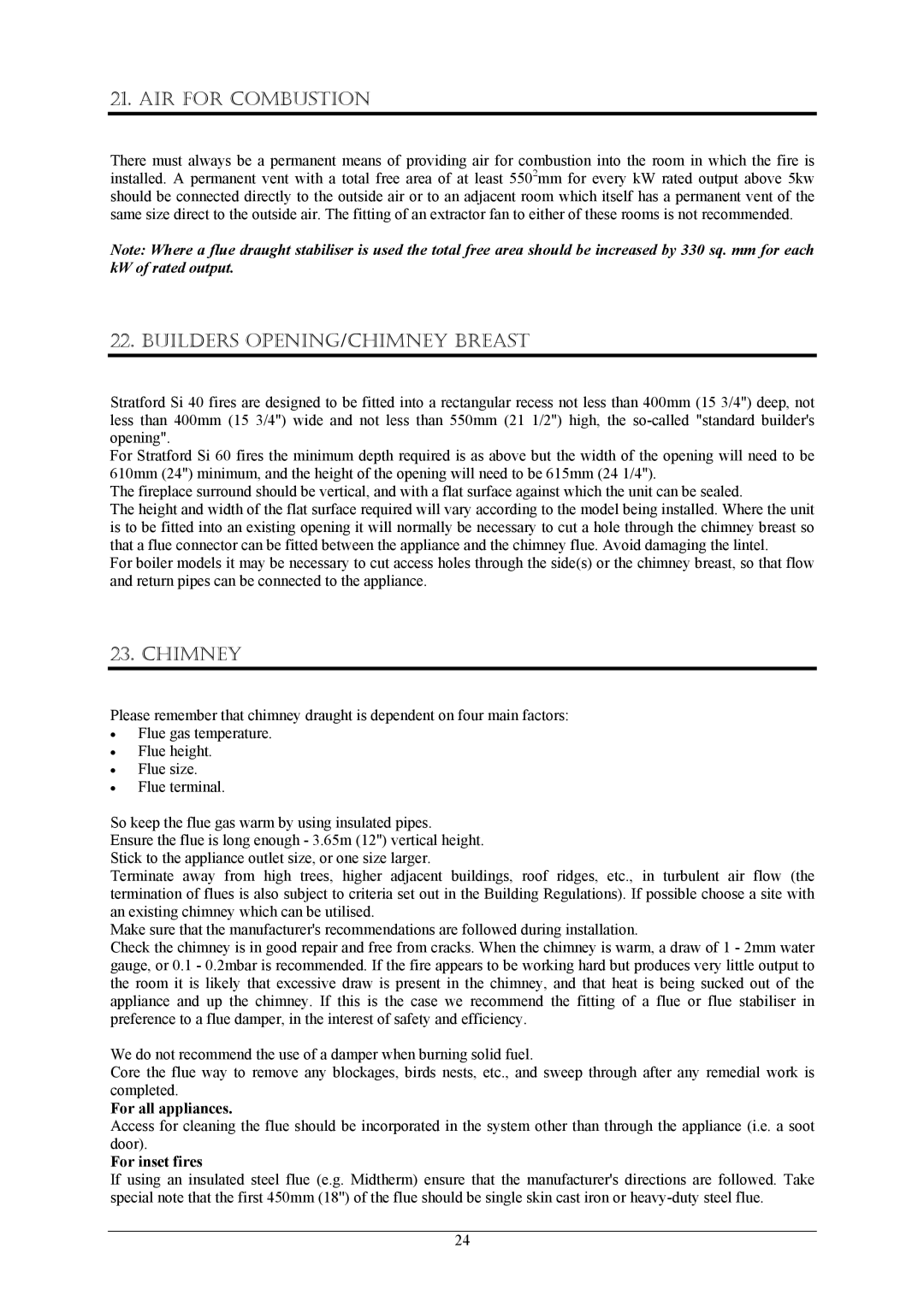SF 50 specifications
The Aarrow Fires SF 50 is an elegantly designed wood burning stove that embodies both functionality and aesthetic appeal. With its sleek lines and contemporary form, the SF 50 serves as a stylish focal point for any room, making it an ideal choice for modern homes.One of the standout features of the Aarrow Fires SF 50 is its impressive energy efficiency. Utilizing advanced combustion technology, the stove maximizes heat output while minimizing smoke emissions. This efficient design not only provides a warm and inviting atmosphere but also reduces the environmental impact of burning wood. The SF 50 has an efficiency rating that often exceeds 80%, ensuring that the majority of the fuel is converted into usable heat.
The stove is constructed using high-quality materials that ensure durability and longevity. The cast iron door not only adds an element of robustness but also enhances the stove's overall heat retention capabilities. The large glass window on the front door offers a captivating view of the flames, creating a cozy ambiance in any setting. The window is designed with cleanburn technology, which helps to keep the glass clear from soot, providing a beautiful view of the fire without the hassle of frequent cleaning.
Aarrow Fires has also integrated innovative air control systems into the SF 50. The primary air control allows for easy regulation of the fire, enabling users to manage the burn rate and extend the burn time when necessary. This user-friendly feature ensures that homeowners can enjoy a consistent and sustainable heat source throughout the colder months.
The SF 50 is compatible with a variety of flue systems, making it adaptable for different home layouts and installation requirements. It is available in several finishes, allowing homeowners to select a look that seamlessly integrates with their interior design. This versatility ensures that the stove can suit various tastes, from traditional to contemporary styles.
In conclusion, the Aarrow Fires SF 50 presents a perfect balance of elegance, efficiency, and technology. With its high energy efficiency, durable construction, innovative air control features, and aesthetic flexibility, it stands out as a premier choice for those looking to enhance their living space with the warmth and charm of a wood burning stove. Whether for a cozy evening or an extended winter retreat, the SF 50 offers a reliable and stylish heating solution.

